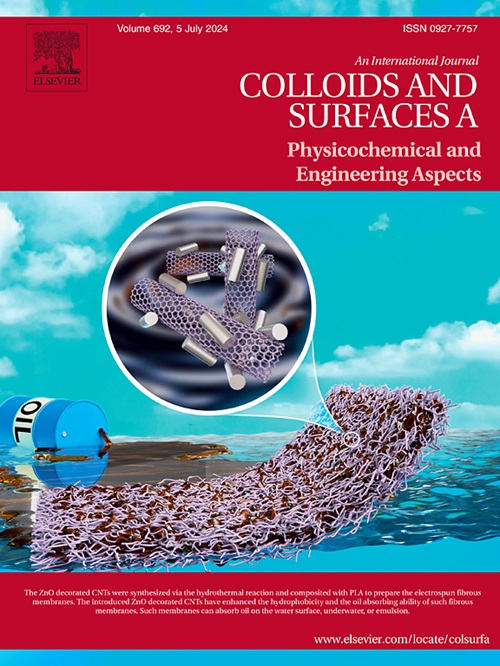揭示应变路径依赖性微结构演变对冷轧[FeNi]69Cr15Mn10Nb6 高熵合金电化学行为的影响
IF 4.9
2区 化学
Q2 CHEMISTRY, PHYSICAL
Colloids and Surfaces A: Physicochemical and Engineering Aspects
Pub Date : 2024-10-09
DOI:10.1016/j.colsurfa.2024.135529
引用次数: 0
摘要
在本研究中,[FeNi]69Cr15Mn10Nb6 高熵合金(HEAs)在环境温度下通过两种不同的途径(即单向冷轧(UCR)和多步交叉冷轧(MSCCR))进行了重冷轧处理。这样做是为了研究应变路径依赖性微结构演变对合金在 0.5 M H2SO4 溶液中电化学行为的影响。均质化试样显示出两相微观结构,富含[FeNiNb]的枝晶分布在近乎均匀的面心立方(FCC)高熵合金基体中。研究发现,在两种加工工艺中,富含[FeNiNb]的树枝状突起都沿轧制方向伸长、断裂和拉长。与 UCR 试样相比,MSCCR 加工试样中的树枝状突起平均尺寸更小,分布更均匀,这主要归因于 MSCCR 加工过程中法线和横向的伸长机制。电化学研究表明,UCR 中的高外加应变导致腐蚀电流密度下降。同时,在 MSCCR 加工中观察到了更积极的趋势。因此,通过 MSCCR 工艺获得均匀分布的小树枝状晶粒和均匀的晶粒细化,为形成具有优异保护性能的被动层提供了理想条件。本文章由计算机程序翻译,如有差异,请以英文原文为准。
Unveiling the effect of strain path-dependent microstructural evolution on the electrochemical behavior of cold-rolled [FeNi]69Cr15Mn10Nb6 high-entropy alloy
In the present work, [FeNi]69Cr15Mn10Nb6 high-entropy alloys (HEAs) were subjected to a heavy cold-rolling process at ambient temperature through two distinct routes, namely unidirectional cold-rolling (UCR) and multistep cross cold-rolling (MSCCR). This was done to investigate the effect of strain path-dependent microstructural evolution on the electrochemical behavior of the alloys in a 0.5 M H2SO4 solution. The as-homogenized specimen displayed a two-phase microstructure with [FeNiNb]-rich dendrites distributed in a nearly homogenous face-centered cubic (FCC) high-entropy alloy matrix. It was found that the [FeNiNb]-rich dendrites elongated, broke down, and elongated along the rolling direction in both processing routes. In the MSCCR-processed specimen, the dendrites exhibited a smaller average size with a more uniform distribution compared to the UCR sample, which was mainly ascribed to the elongation mechanisms in the normal and transverse directions during the MSCCR route. Electrochemical studies demonstrated a decrease in corrosion current density due to high imposed strains in the UCR. Meanwhile, a more positive trend was observed in MSCCR processing. Consequently, achieving uniformly distributed small dendrites and uniform grain refinement through the MSCCR route provided ideal conditions for forming passive layer with superior protection properties.
求助全文
通过发布文献求助,成功后即可免费获取论文全文。
去求助
来源期刊
CiteScore
8.70
自引率
9.60%
发文量
2421
审稿时长
56 days
期刊介绍:
Colloids and Surfaces A: Physicochemical and Engineering Aspects is an international journal devoted to the science underlying applications of colloids and interfacial phenomena.
The journal aims at publishing high quality research papers featuring new materials or new insights into the role of colloid and interface science in (for example) food, energy, minerals processing, pharmaceuticals or the environment.

 求助内容:
求助内容: 应助结果提醒方式:
应助结果提醒方式:


